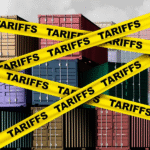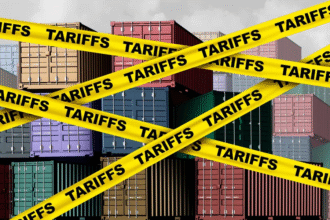The Trump administration is pursuing a mix of deregulatory, supply-side, and immigration-focused policies to address the housing crisis. The most radical shifts include opening federal land for development, easing regulations for builders, and linking immigration enforcement to housing affordability.
“By ensuring everyone can fairly access opportunity, we open the doors to individual advancement and enhance our collective prosperity.” – The National Fair Housing Alliance® (NFHA™)
Easing Regulations to Boost Housing Supply
The Trump administration is prioritizing the relaxation of building and development regulations to encourage private developers to increase the housing supply. This deregulatory approach is expected to facilitate faster, simpler, and potentially less expensive construction, which could help address the national housing shortfall and bring down home prices.
Trump’s team argues that regulatory costs account for a significant portion of new housing prices, and reducing these barriers could make housing more affordable for buyers and renters.

Unlocking Federal Land for Housing Development
A central Trump initiative is to identify and release federal land for affordable housing construction, especially in Western states where federal land is abundant. This move has bipartisan support and is seen as a way to quickly add supply in markets with severe shortages.

However, practical obstacles-such as the lack of infrastructure (water, sewage) on much federal land and environmental concerns-could limit the immediate impact of this policy, especially in high-cost urban areas outside the West.
Here are some reasons why high-cost areas present unique challenges:
- Most federal land near high-cost urban areas lacks essential infrastructure such as water, sewer, and roads, making development far more expensive and logistically challenging compared to building on already-serviced land.
- The available federal land is often not well-located relative to job centers, public transit, and amenities, meaning new housing would likely be far from where demand is highest, increasing transportation costs and reducing the appeal for most residents.
- Local regulatory barriers-such as restrictive zoning, minimum lot sizes, and bans on multifamily housing-are the primary drivers of high housing costs in urban areas, not simply land scarcity. Even if federal land were made available, these local policies would often prevent dense, affordable development.
- Environmental concerns and existing land uses (e.g., military bases, parks, protected areas) further limit the practicality of developing federal land in or near major cities, especially outside the West, where most federal land is not suitable or available for housing.
Immigration Crackdowns and Housing Demand
Trump’s administration has pledged mass deportations, arguing that reducing the number of immigrants will lower demand and, thus, housing prices.
Experts caution that this approach could have unintended economic consequences, such as labor shortages in construction and service sectors, potentially slowing new housing development and raising costs.

Changes to Federal Housing Funding
The administration has signed a year-long stopgap funding bill that increases funding for some HUD programs but overall cuts domestic spending by $13 billion. While there are increases for key rental assistance programs, the funding is still likely insufficient to meet demand, potentially resulting in a loss of housing vouchers and under-funding of affordable housing initiatives.
There is skepticism among housing advocates about the administration’s commitment to enforcing fair housing laws and supporting new affordable housing developments, given the focus on spending cuts and deregulation.
Tax Policy and Homeownership Incentives
With Republican control of Congress, Trump is expected to extend the tax provisions from the 2017 Tax Cuts and Jobs Act, which could affect mortgage interest deductions and other incentives for homeownership.
The administration also promises to cut taxes for families, which may marginally improve affordability for some buyers, but the broader impact on housing costs remains uncertain.
Zoning and Local Control
Trump’s housing policy, influenced by conservative think tanks, emphasizes giving states and localities maximum flexibility in land use and zoning decisions, minimizing federal intervention.
While this could reduce some regulatory barriers, it also risks perpetuating restrictive local zoning that limits new housing supply, especially affordable units, in high-demand areas.














